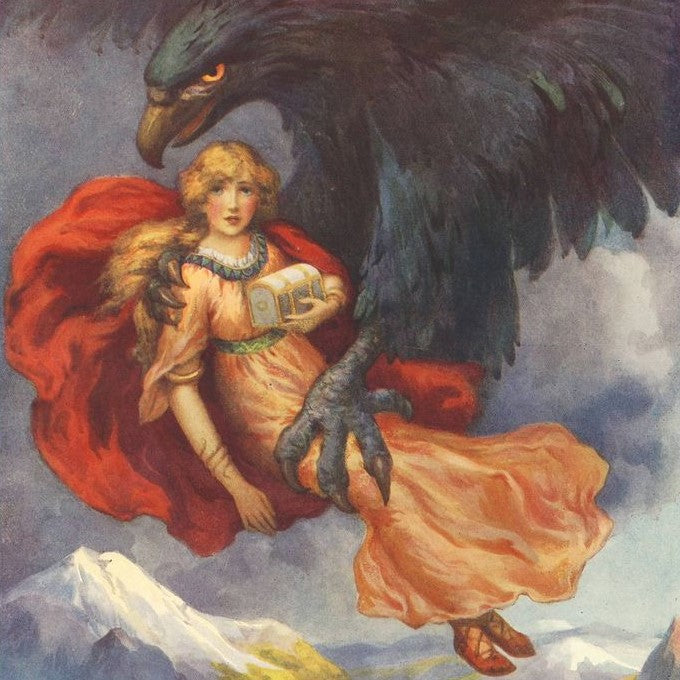Viking Shieldmaidens: Warriors of Legend and History
The Viking Age (circa 793–1066 AD) was an era of exploration, conquest, and cultural transformation. While much of history focuses on the male warriors who sailed the seas, the legends of Viking shieldmaidens—women who fought alongside men in battle—have captivated historians and storytellers alike. But were these fierce female warriors real, or are they just products of myth and legend?

The Myth and Reality of Shieldmaidens
The concept of shieldmaidens is deeply embedded in Norse sagas and poetry. Stories such as those of Lagertha, a warrior who fought alongside the legendary Ragnar Lothbrok, or Hervor, who wielded her father’s cursed sword Tyrfing, paint a picture of fierce women defying traditional gender roles. Yet, despite their defiance, they were also profoundly committed to their beloved, stepping in to help when needed or even altering their life’s course. These stories, while compelling, were often written centuries after the Viking Age and tend to mix history with fantasy.
However, archaeology has provided evidence that women may indeed have participated in combat. In 2017, a groundbreaking discovery was made in Birka, Sweden. A grave previously believed to belong to a high-ranking male warrior was revealed, through DNA analysis, to contain the remains of a woman. This grave included weapons, armor, and even a set of strategy game pieces, suggesting that she was a respected warrior, not merely an outlier.
Lagertha: The Warrior Queen
One of the most famous shieldmaidens in Viking mythology is Lagertha. Her story originates from the 12th-century account Gesta Danorum by Saxo Grammaticus. According to legend, Lagertha was a fierce warrior who defended Norway against invading forces. She first gained recognition when she fought alongside the legendary Ragnar Lothbrok, helping him to reclaim his kingdom, and, in due time, falling deeply in love with him. Her bravery and skill in battle impressed Ragnar so much that he sought her hand in marriage.
Lagertha's story is one of resilience, independence, and enduring love. After marrying Ragnar, she later parted ways with him and rose to power as a ruler in her own right. Yet, when Ragnar faced a crucial battle, Lagertha, still concerned for her former beloved, arrived with a fleet of ships and a loyal army, demonstrating her unwavering strength and leadership.
Her story is a blend of myth and historical possibility. While there is no definitive evidence of Lagertha’s existence, her character embodies the ideals of courage and self-reliance that were admired in Viking culture. She represents the possibility that women could wield power and influence, both on the battlefield and beyond.
Hervor: The Warrior of Tyrfing
Another notable shieldmaiden in Norse mythology is Hervor, a warrior whose story is told in the Hervarar saga ok Heiðreks. Hervor was the daughter of the legendary berserker Angantyr, who perished in battle, leaving behind the cursed sword Tyrfing. Unlike most women of her time, Hervor refused to accept a traditional role and instead pursued her birthright, setting out on a perilous journey to claim Tyrfing from her father’s haunted burial mound.
Her determination and bravery are key aspects of her story. Disguising herself as a man, Hervor became a formidable warrior and gained a fearsome reputation. When she finally reached her father’s grave, she fearlessly confronted his ghost to demand the sword. The specter warned her of the weapon’s dark curse, but Hervor, undeterred, took possession of it, proving her worth as a warrior.
Despite the warnings, Hervor took up Tyrfing in battle, embracing the life of a fierce shieldmaiden. Her story is one of defiance and perseverance, embodying the tension between fate and personal choice in Norse mythology. However, in time, she set aside her warrior ways, choosing a more traditional life with her beloved. Her legacy endured through her son, Heidrek, who played a pivotal role in later sagas.
Hervor’s story demonstrates that shieldmaidens were not only fighters but also figures of resilience and determination. Her tale, like that of Lagertha, underscores the possibility that women in Viking society could break from convention and carve out their own paths, even in a world dominated by men.
Valkyries and Their Connection to Shieldmaidens
The shieldmaidens of Norse mythology share a strong connection with the Valkyries—supernatural warrior maidens who served Odin, selecting fallen warriors to join him in Valhalla. While Valkyries were divine figures, often depicted as otherworldly beings guiding the souls of the dead, their imagery likely influenced the concept of mortal shieldmaidens. Some sagas blur the lines between the two, suggesting that particularly fierce women could be seen as living counterparts to the Valkyries. This link reinforces the idea that women warriors, though rare, were not entirely outside the realm of possibility in Viking society.

Women’s Roles in Viking Society
Although Viking society was patriarchal, women had more rights and autonomy compared to their counterparts in many other medieval cultures. They could own land, inherit property, and even initiate divorce. Some women, particularly those from noble families, may have had the opportunity to train in combat, particularly in times of crisis.
Beyond the battlefield, women played crucial roles in Viking society as seers, merchants, and even leaders. Some sagas describe women leading raiding parties or defending their homes against invaders. This suggests that while full-time female warriors were likely rare, women were not entirely absent from combat.
Modern media has embraced the idea of Viking shieldmaidens. Television shows like Vikings and The Last Kingdom have brought characters like Lagertha to life, inspiring audiences worldwide. While these portrayals are often dramatized, they highlight the enduring fascination with the idea of warrior women in Viking history.
Were Viking shieldmaidens real? The answer lies somewhere between myth and history. While sagas may exaggerate their presence, archaeological discoveries suggest that some women did take up arms. Whether as warriors, defenders, or symbols of resilience, Viking women played a more active role in their society than previously thought. The legend of the shieldmaiden endures, continuing to inspire new generations with tales of bravery and strength.









